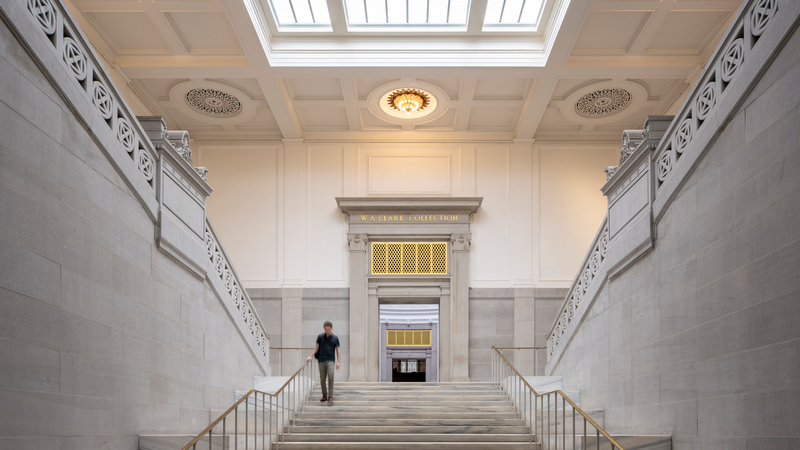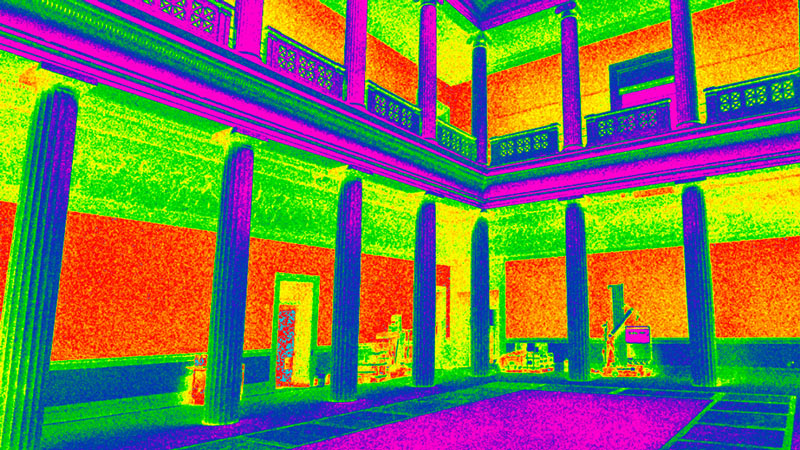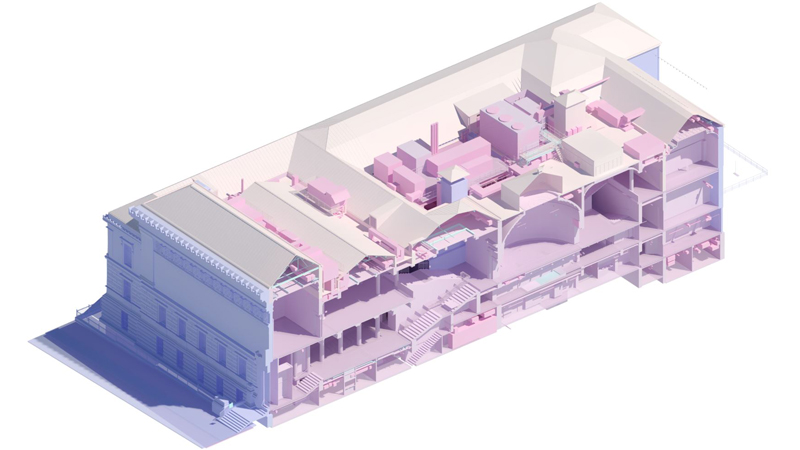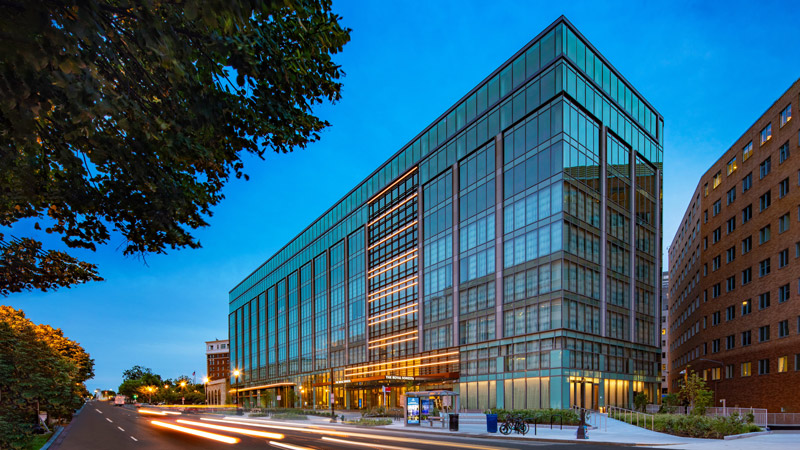Recent Articles
Future-Proofing the Past through Adaptive Reuse
Ed Benes and Kim Cowman explore how adaptive reuse transforms old buildings into sustainable spaces using modern technologies and essential skills.

Adaptive reuse represents a transformative approach in the architecture and engineering industry, where the past and future converge to create sustainable, functional spaces out of existing structures. This practice is not merely about refurbishing old buildings but reimagining them for new uses, blending historical integrity with contemporary needs. It’s an innovative solution that leverages the embodied energy of pre-existing materials and infrastructure, significantly reducing the environmental impact compared to new construction.
At the core of adaptive reuse is the principle of making the most out of our built environment, turning historical and often underutilized buildings into vibrant, functional spaces that meet today’s standards of energy sufficiency and sustainability.
Embracing Technology in Adaptive Reuse
At LEO A DALY, our approach to adaptive reuse architecture projects integrates advanced technologies such as 3D modeling, Building Information Modeling (BIM), and virtual reality to enhance project outcomes. For instance, in the adaptive reuse of the historic Corcoran Gallery in Washington, D.C., we employed laser scanning to capture the precise dimensions and architectural details of the existing structure. This was crucial for developing accurate models where pre-existing documentation was unreliable or absent.
We also leverage virtual reality to bridge the gap between conceptual designs and physical realities. By using VR headsets, our clients can virtually walk through the proposed adaptations, allowing for a more intuitive understanding and interaction with the design. This is especially beneficial in complex projects like hospital renovations or large infrastructure overhauls, where understanding spatial relationships and operational logistics is critical.
The absence of accurate building documentation is a common issue in older structures originally designed on pen and paper. Technologies like 3D scanning provide us with a level of detail previously unattainable, enhancing our confidence in the design process and helping teams avoid costly modifications during construction. These tools not only improve design accuracy but also significantly increase efficiency by enabling precise alterations and ensuring compatibility with the building’s historical aspects.



Adaptive Reuse and Energy Sufficiency
Looking forward, the role of adaptive reuse is set to become even more significant. We anticipate a shift towards more comprehensive sustainability assessments, considering not just energy efficiency but energy sufficiency and the total carbon impact of building materials.
This approach considers all stages of a building’s life, from material extraction and manufacturing to construction, operation, and eventual decommissioning. By evaluating the total carbon footprint, we can make more informed choices about materials and construction techniques that reduce environmental impact over the building’s entire lifecycle.
Adaptive reuse projects are uniquely positioned to lead this change. By repurposing existing structures, these projects inherently reduce the demand for new materials and the associated environmental burdens of extraction and production. Additionally, adaptive reuse often preserves the cultural and historical significance of buildings, adding layers of social sustainability to the environmental benefits.

Preparing the Next Generation of Design Professionals
As adaptive reuse becomes a more prevalent and influential practice within architecture and engineering, certain skills and training are critical for professionals aiming to excel in this field:
- Technological Proficiency: Mastery and the evolving knowledge of tools like BIM and virtual reality are crucial. As AI in architectural design advances, it will become increasingly useful. These technologies enable precise planning and problem-solving during the adaptive reuse of buildings that often lack detailed and accurate documentation.
- Creative Problem Solving: Professionals must develop the ability to visualize and implement transformations that repurpose old structures for entirely new uses. This requires an innovative approach to design, moving beyond the original intent of the building to meet modern demands.
- Regulatory Knowledge: A thorough understanding of local building codes and the ability to navigate regulatory environments are necessary to ensure that adaptive reuse projects are both feasible and compliant. This involves close coordination with local authorities to understand and adhere to modern standards.
- Environmental and Economic Analysis: Design professionals need to be adept at quantifying the environmental benefits of adaptive reuse, particularly in terms of embodied carbon emissions savings. Similarly, demonstrating the economic advantages of these projects to developers and building owners is essential, providing a clear rationale for the choice of adaptive reuse over new construction.
- Client and Stakeholder Education: It is also the responsibility of professionals to educate clients and stakeholders about the potential and benefits of adaptive reuse. This involves clear communication of feasibility studies, benefits analysis, and potential outcomes to support informed decision-making.
By focusing on these areas, professionals can effectively address the unique challenges of adaptive reuse projects and leverage their potential to meet contemporary needs while preserving historical value.

As adaptive reuse evolves, technologies such as BIM and AI will continue to play an essential role. They will help us evaluate the potential for repurposing buildings more accurately and swiftly, ensuring that adaptive reuse remains a viable and competitive option compared to new constructions. Moreover, as Building Energy Performance Standards become more widespread, these technologies will be crucial in helping building owners upgrade performance and comply with new regulations.
These technological advancements, coupled with a strategic focus on long-term sustainability, will ensure that adaptive reuse not only preserves historical structures but also transforms them into forward-thinking examples of energy sustainability. This approach is integral to meeting modern environmental challenges and ensuring that our built environment contributes positively to our ecological and social fabric. If you are still curious about adaptive reuse or looking for expertise in your next design project, reach out to our team at LEO A DALY today.
About the authors

Edward Benes is Chief Executive Officer and has been with the Leo A. Daly Company since 2012. As CEO, he assists Chairman Leo A. Daly III, in developing strategy and operations for the firm. Prior to becoming the CEO, Edward was Senior Vice President, General Counsel, and part of the company’s Executive Team. Before becoming an attorney, Edward was a Project Manager and Engineer leveraging his expertise in design, project management, business management and design technology. Benes is a licensed professional engineer in the state of Illinois.

Kim Cowman leads engineering and sustainability across LEO A DALY and is an expert in mechanical design for buildings. Kim is responsible for establishing and leading a common engineering design platform and growing our engineering practice across existing and new engineering centers. She is a co-chair of the Sustainability Steering Committee—practice and thought leaders in design, engineering and business operations—charged with leading the firm’s sustainability practice offerings.
